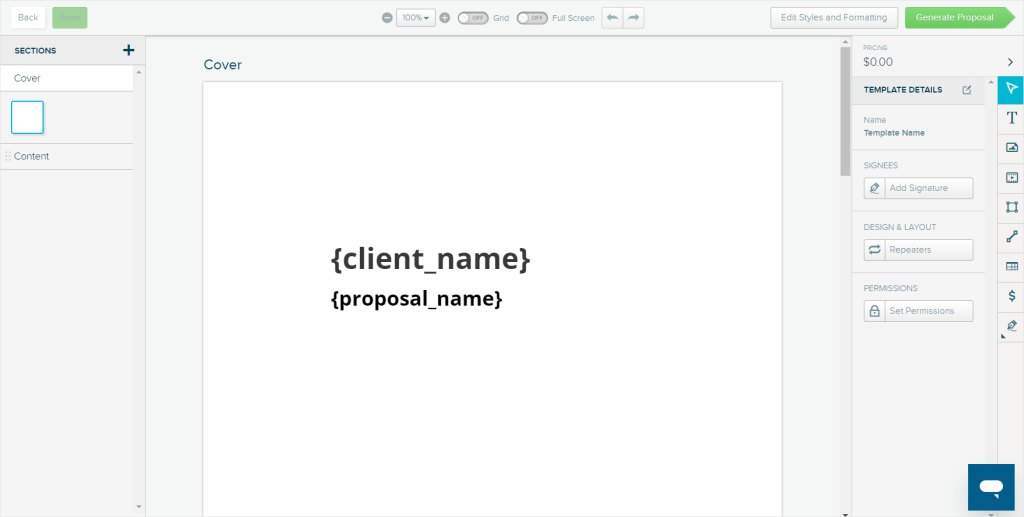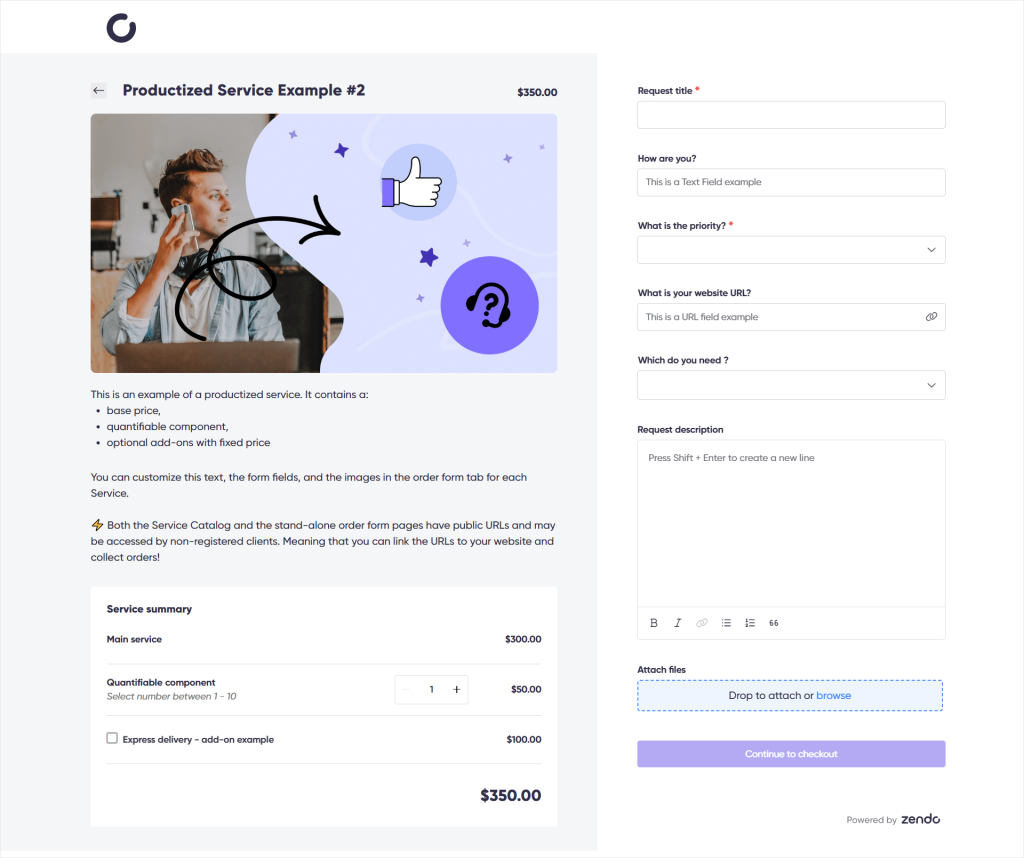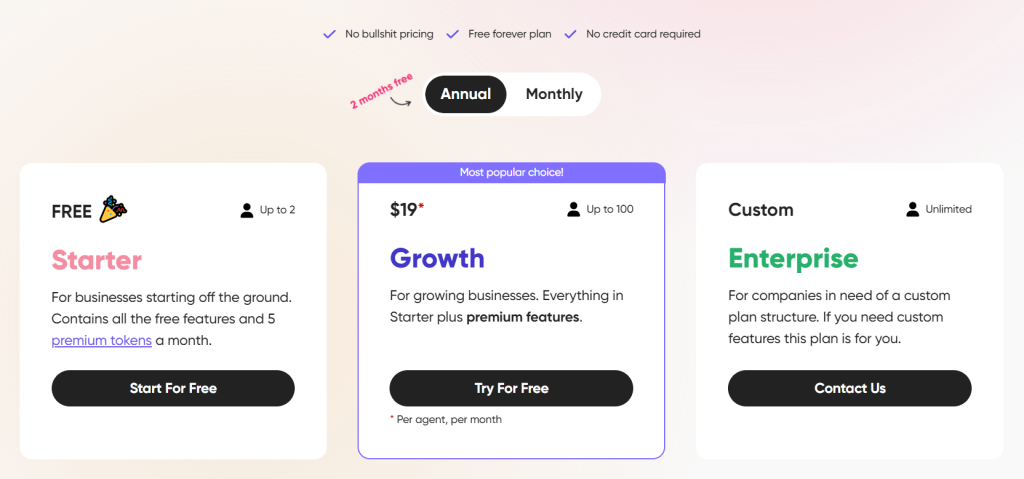You must have watched The Office at some point in your life. Right?
If not, let me present this corporate nightmare.
Imagine the desks overflowing with documents in a barely lit space, with the only splash of color being the wilting fern in the corner. Moving around sluggishly are the living corpses, sustained on cold and bitter coffee, clad in drab clothing that fades with the already bleak background, way better than camo in the jungle. At this point, everybody’s stopped wondering whether their jobs have any purpose. All that matters is survival.
If that gave you shivers, please be more understanding of the older generations that had to live through this nightmare come true of the corporate world. And be more appreciative of the WFH opportunities, as well as that yellow slide your employer has installed in the middle of the office.
But if you’d like to experience that for yourself — or bring back memories, if you’re one of the poor victims of badly designed offices — nothing’s stopping you from using Proposify.
Proposify is a self-proclaimed “leading proposal software”. Its target audience is selling and marketing teams that struggle with closing deals. Proposify’s goal is to help create outstanding proposals to win clients over, as well as speed up the entire process. Even in the business management software niche, Proposify managed to find an even smaller one.
While Proposify looks promising on its website, with screenshots showing off bits and pieces of the software, it’s actually disappointing, if not shocking. Who knew that in this day and age we can still find such outdated design, which beats such disasters as Tave and 17Hats?
In this article, we’ll analyze Proposify both in terms of looks and functionalities and compare it to the best Proposify alternative — Zendo.
Introducing Proposify Alternative: Zendo
Zendo is a Client Portal software created for small businesses and agencies to help them sell and deliver productized, custom, free, and subscription-based (coming soon) services. Best of all, it’s a new tool that took a completely new approach to the sales process — instead of creating too complex to comprehend pipelines that require micromanagement, it simplified it as much as possible.
In comparison, Proposify doesn’t offer any new solutions that reflect the needs of the modern world. It whole-heartedly supports the old system where you communicate with clients through email, drown them in all sorts of documents they need to go through and fill out, and make the whole process drown out and unpleasant for all parties involved.
Until you’re into bureaucracy and PowerPoint presentations, mind you.
But if you’re here to unlock new possibilities with the modern ways of doing business, read on and discover what Zendo has to offer.
How Zendo Can Increase Your Profits
Close The Deals Faster
The main feature that Proposify is centered around is proposals. It has a whole library of available templates, but there’s a fat chance that you’ll find something that properly reflects your brand. It will have to undergo some heavy editing and customization, which might take you more time than creating a template from scratch.
Thankfully, there’s good news — Proposify offers that option. It gives you the creative freedom to create outstanding documents that will rush your clients into signing them.

…but good luck with that.
All that’s missing from this editor is good old Clippy from Microsoft Word.
If you want to create truly outstanding proposals that wow and impress, you’ll be forced to use another software anyway, especially if you care about looking professional and up with the times. But there’s another question that begs to be answered — do you need all your proposals in the first place?
Unless you’re dealing with long-term projects that are overwhelming with their complexity, proposals are the triumph of form over substance. The beautiful images downloaded from Unsplash and perfectly measured layouts won’t really help you in closing that deal — more often than not, it’s mostly the budget that seals the project’s fate, as well as your experience, approach to the problem, and the overall customer experience. And if you do care about looking fancy, it’s better to make an investment in two or three templates made by a true professional.
Yes, Proposify gives you access to a huge number of proposal templates — but in practice, only some of them will suit your needs, and you don’t really need an entirely new template for each new client.
Moreover, exchanging back-and-forth emails is a slow process. Answering emails is hardly ever the best part of anyone’s day, so it might take a while to get a response. Losing messages, forgetting to use BCC, and confusing threads is also a thing that takes place from time to time, so your beautiful proposal might not even get the chance to shine.
Let’s look at that from another perspective.
When your clients require your services, they need to reach out to you first in order to learn about all the terms and conditions involved. Before that, they need to explain their needs in detail, so there’s a lot of information that needs to be exchanged before getting that proposal. In the meantime, your competition might get to them faster and snatch that deal out of your hands.
Wouldn’t it be much better if your clients could learn about your terms and conditions upfront? If they could provide all the necessary information at the same time and be aware of the ballpark price at the least, helping them make a decision faster?
That’s what Zendo does.
It gives you a customizable Service Catalog, where you can present all your services in a professional manner, following all the best UX/UI practices. The editing capabilities are enough to show off your brand, but not enough to make you feel lost or make bad design choices (as it was possible in Plutio, which definitely went overboard with the creative freedom).
Once your client finds what they’re looking for, they can go to the specific service, read the description that may include terms and conditions, as well as customize their order and fill out the Order Form.

Zendo offers four different Service Types: Free, Subscription-based, Custom, and Productized. The last one combines all the options, giving you the opportunity to create a rich and fully customizable offer, consisting of already estimated, custom, and free items. If any of your items are quantifiable, you can set a range of maximum and minimum number of items your clients can order.
Overall, instead of sending a proposal your clients love to nitpick, they can submit their own, giving them a sense of transparency and control.
All that leads to one of Zendo’s greatest benefits — it helps you close deals faster than ever before. Since your clients get information on everything they need to know upfront, they can make their decisions quicker. As a bonus, it will quickly weed out the unqualified leads that only take up your time.
If you’re unsure how you can change your current email-based process to the one we described above, you can read our guide on how to turn your agency into a productized service business. This business model has the potential to maximize your ROI and bring true productivity on board.
Stronger Business Relationships
When your business creates and sells them, you need to cultivate the best business relationships possible. You need to think far into the future: each satisfied client can give you a referral, which is absolutely priceless, while bad reviews can single-handedly kill your business. To avoid that, sometimes it’s necessary to apologize with a sweet discount or give out any other incentive.
After all, you shouldn’t be focusing only on the current project’s worth; you have to think about the overall customer lifetime value. In some cases, it’s better to agree to a lower price if the customer keeps coming back (along with referrals!). And who knows, maybe the tables will turn sooner or later, and the client will come back with a huge deal that made it all worth it.
Because of that, it’s necessary to stay in good graces with your customer base. From sending personal “thank you” messages to engaging in small talk during meetings, it’s all worth the effort to change the business relationship from vendor-client to a reliable partner.
To do that, there are several things you need to take care of:
- First of all, you need to stay in close touch with your client. Sending replies via email hours after receiving them won’t paint you in the best light — you should be able to answer your client’s questions as quickly as possible.
- Then, you need to keep them updated on the project. If your clients have to keep asking about the project’s status, you’re in trouble. They should have access to a place where all the up-to-date information is stored so that they can check it even in the middle of the night. One such solution is a Client Portal.
- Also, your clients need an easy and convenient way to share their feedback and ideas, while you need a proper space to share necessary files. In long-term projects, all that data gets easily lost, especially when dealing with good old email inboxes.
- In case of any trouble, mistakes, or delays, your clients should be notified immediately. Don’t try to sweep that under the rug; trust us, it will bite you in the ass later on. Instead, prove your transparency, admit to your mistakes, and own them. This will show the strength of your character that clients will appreciate.
By making sure that your communication is top-notch, you elevate the overall customer experience. According to PWC’s report, speed, convenience, and helpfulness are crucial, with one in three consumers leaving a brand entirely if they feel they’re not well taken care of.
Many businesses neglect that part, either focusing on the final product or service or just lacking soft skills entirely. By ensuring your client is satisfied at all stages, you can get far ahead of your competitors.
Unfortunately, because Proposify focuses on creating templates for better proposals and other documents that are meant to be sent by email, the final customer experience doesn’t follow the best practices. Moreover, Proposify doesn’t offer any new solutions that improve communication or promote transparency. It supports the old ways of doing business that are still relevant in bigger corporations restricted by red tape, but if you’re a small business owner that wants to depend on speed and flexibility, this approach will fail you.
Thankfully, you can trust Zendo to steer you in the right direction.
First and foremost, it allows you to give up on email entirely. Of course, you still get notifications, but you can forget about exchanging back-and-forth email messages. Instead, you get the modern chat experience as your center of communication.
That’s right — every new request that lands on Zendo through the Service Catalog creates a conversation thread, which is easily accessible to both clients and team members assigned to it. There, you can further discuss the project and answer any questions.

But that’s not all. To make things as easy as possible, there are other features that make this chat one-of-a-kind and extremely powerful. Besides simple messages, you can also:
- send multiple quotes,
- issue multiple invoices,
- send payment reminders,
- ask for quote approval.
On top of that, your clients can pay for the ordered services directly in chat. With just one click, they can finalize any payments quickly and with no fuss. Even the laziest of people can’t complain that it’s too much work! And for those that still try, allow me to reveal another great feature — you can automate the whole process to free up your time even more.
Of course, those of us who like using Slack or Discord, are aware that messages get lost just as easily, if not easier, than in our email inbox. Thankfully, Zendo thought ahead of that.
All the quotes, invoices, and attachments, besides just showing up in the chat, will also be saved in the right sidebar. No matter how long the conversation gets, you can trust Zendo to save the necessary files for easy access.
Moreover, the order form that your client submitted, will also be stored there, along with other information: request status, request state, assignees, and custom fields, which can be used for saving anything you need.
Additionally, if there are any other customer data you need to save, you can make use of Notes in the Client Profile section. There, you’ll find the record of your whole business relationship with your clients, so even if someone comes back to you after a long break, you’ll be able to seamlessly start where you left off. This way, you can easily impress your clients and leave the impression that you have everything under control.
Satisfied clients are of course the ones that will keep coming back and recommend you to their network, so make sure that the software you’re using elevates the customer experience. Fast delivery, quick responses, and full transparency are the key.
Less Paperwork & More Time For Projects
Paperwork, the bane of our existence, is a sad yet necessary part of doing business. As we all know, handling traditional documents can be rather time-consuming, especially if we’re dealing with different taxes, discounts, and subscription-based services. It’s easy to get lost and confused among all that bureaucracy, and the mistakes will inevitably pile up.
Unfortunately, Proposify doesn’t solve that issue for us — we’re on our own. Its only goal is to help us with proposals and nothing else. Which is strange; usually, similar document management tools are more holistic than that. After all, if you’ve developed a proposal editor, it’s not a stretch to do the same for other files.
On the upside, Proposify is very diligent in tracking our created proposals with the help of the audit trail feature. If someone left a note on our document, edited it, or even just viewed it, it’ll stay on the record. The same goes for when someone sends a reminder or signs the contract; you’ll be immediately notified of that fact.
Proposify also helps with signing documents. It comes with legally binding signatures that can’t be disputed, and on top of that, you can require multiple signatures per one document. Proposify will also keep track of which signatures are still missing to close the deal, so you know who needs some prompting and encouragement.
While Proposify decided to help with at least one part of the paperwork — creating proposals — we have to take a minute to consider whether it truly helps save us time. After all, much software designed for productivity only makes us do more work. Sometimes, that’s because the setup can be so time-consuming; if you ever spent too much time on Notion perfecting your templates, you know what we mean.
Other times, it’s because of maintenance. If you spend more time than needed on creating subtasks for your tasks, overanalyzing the reports, and transferring data to your chosen software, then you’re wasting your time. It’s a trap.
And Proposify leads us straight to that trap. The editor with its thousands of options can make us stuck on things that in the end, don’t matter as much.
Zendo, being aware of that pitfall, does everything it can to save us from that fate. That’s why all the paperwork is generated automatically, giving you clean and minimalistic documents that only include the elements that are truly necessary. Because of that, you won’t find yourself stuck wondering whether the font should be 12px or 13px — Zendo takes care of that, for you.
Instead of setting up margins, images, and fonts, you only set up the default method of payment (none, Stripe, or bank transfer), how you want to send the payment request (manually or automatically after order submission), and issue an invoice (never, automatically after the payment, or manually).
So as you can see, everything is interconnected. If you choose your payment requests to be sent automatically after order submission, a quote will be automatically sent as well; and once your client makes a payment, an invoice will be generated automatically, too.
This is one of the simplest ways of creating a smooth workflow that works without much of your interference. And of course, if you’d rather do things yourself, you can create different Workflows and use them for specific services.
This proves just how good Zendo is at handling paperwork for you. It doesn’t require you to go through complicated setups, nor do you have to build your processes from the ground up. It’s easy, intuitive, and effortless, allowing you to handle more clients and bring in more profit.
Smaller Investment Required
No matter how great a tool is, if you can’t afford it, it’s a bust. Or, if the quality/price ratio doesn’t make sense.
And the truth is, Proposify’s pricing is outrageous. Its first subscription plan, called the Team Plan, costs $49/user per month. For a tool that’s good at one thing only — proposal content creation — the price is hard to explain. Because we’ve already explored so many different business management tools, we know that for that price, you can get an all-in-one solution that offers way more features.
If your team consists of more than 10 people, you have to settle for the Business Plan. How much does it cost? Nobody knows! You have to contact the Proposify team to get an estimation. In this subscription plan, you get Salesforce integration, support, and onboarding services, as well as roles, permissions, and approval workflow.
For small teams just starting out, this investment will be a hard pill to swallow. Thankfully, one of its best alternatives — Zendo — is much more affordable and within grasp for many businesses. After all, its first pricing tier, called Starter, is entirely free with no strings attached. Instead of introducing a free trial that never lasts long enough to give you a taste of your chosen software’s capabilities, you have all the time in the world to get to know it.
In this plan, you get access to most features. And those functionalities that are limited to the higher pricing tier — such as white-label features and automation — can be tried out anyway. Everyone gets renewable 5 premium tokens that can be used to access special features.
Also, you can invite one extra user to enjoy the ins and outs of the platform!
The Growth subscription plan, which gives you access to every single feature with no limitations, costs $19/per user a month. That’s almost half the cost for Proposify, and it gives you much more features than just creating business proposals & proposal tracking for sales teams. Therefore, we can all consider Zendo to be a much smarter investment.

Zendo vs Proposify: The Conclusion
If all you’re looking for is an online proposal software and only that, Proposify might be able to meet your needs. Otherwise, you’ll need a bunch of other integrations to make that work, requiring you to invest in many different tools at the same time. This might rack up the costs substantially, making it only a good choice for big enterprises that stopped being impressed with such pricing.
But for everyone else, this investment isn’t worth the bother. Small to medium businesses will take their sweet time considering all the pros and cons in order to make the smartest decision possible. They might be even ready to pivot and suit their internal processes to a specific software. And they might think: do I really want to create proposals that hardly anyone reads from cover to cover topped off with some convoluted customer acquisition strategies?
Nowadays, when you can create powerful and interactive webpages, as well as offer cost-effective productized services, the old ways of doing business are over. It can only survive in specific circumstances, where the companies are too big and restrictive to actually bring any changes.
So do consider one of the best Proposify alternatives — Zendo — and reap the benefits that come from the modern side of selling services.

A free online training. Delivered daily to your inbox to grow your productized agency.
What Is Proposify?
Proposify is a proposal software, which helps businesses create reusable proposal templates with legally binding signatures. It also gives you metrics on your sent proposals’ efficiency, numbers on closed and lost deals, as well as which signatures are still missing. Moreover, you can turn on the audit trail, which will record the history of your documents, from who made edits, left comments, or just viewed it.
What Is Zendo?
Zendo is a business management software for selling all kinds of services, from custom to productized and subscription-based, combined with a Client Portal that makes your customers stay up-to-date at all times. It’s a fairly modern solution that follows the best UX/UI standards and which offers simple solutions to complex problems. Everything of importance, from sending quotes and issuing invoices to finalizing payments, happens in one place only — chat — making Zendo the true all-in-one software.
Why Is Zendo The Best Proposify Alternative?
Proposify is a good tool for one thing only — creating and tracking proposals. For modern businesses, and especially for small to medium companies, that’s simply not enough. Proposify forces you to either install integrations or use other apps on top of that, making it hardly effective or affordable. Meanwhile, Zendo offers everything a business owner needs to run a successful business and delight their customers with excellent service.
Is Zendo More Affordable Than Proposify?
Zendo is much more affordable than Proposify. Proposify offers two subscription plans: Team Plan, for $49 per user per month, and Business Plan, which requires custom estimation. Meanwhile, Zendo has three pricing plans: an entirely free Starter Plan, the Growth plan for $19 per user per month, and the Enterprise plan requiring individual consultation. It’s clear that Zendo offers much more for a way lower price than Proposify.











